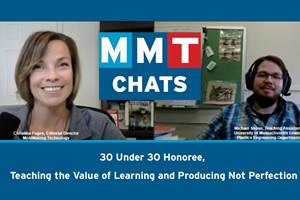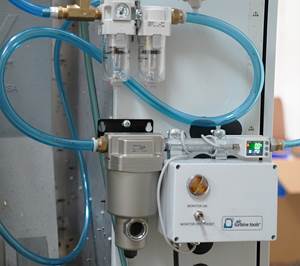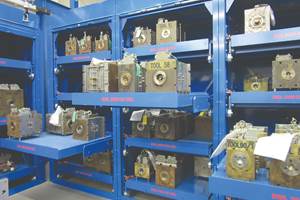SPI Groups to Set Guidelines for Mold Electrical Interface Practices
The Society of the Plastics Industry, Inc. has formed subcommittees to ensure safety and good electrical practices.
The Mold Safety Committee of The Society of the Plastics Industry, Inc. (SPI) has formed two subcommittees to set criteria to ensure that molds meet certain guidelines for safety and good electrical practices. These groups, organized under the SPI Moldmakers Division, will address the following issues.
The Electrical Subcommittee
Members of this group are working to create guidelines for:
- The recommended wire size within the mold.
- The current capacity of the wire to be used in molds.
- The temperature rating of the wire to be used in molds.
- The name of the wire. Example: appliance wire, UL listed, CSA approval and other approved standards for wire (5107A).
- Wire capacity of the wire ways (wire channels) in the molds for the thermocouples and the heater wires.
- Assuring that the thermocouples are put in wire ways (channels) separate from the heater wires.
- The proper way to ground the mold.
- Setting up the proper way to wire molds. This would include such things as how wires are to be spliced within the mold, i.e., by wire splices, butt splices, wire nuts, etc. (Soldering of wires within the mold is not recommended, and the guidelines will specify this. The use of connectors that require the wires to be soldered to them also is not recommended and the guidelines will specify this, as well.)
The Mold Interface Subcommittee
This group is charged with providing guidelines regarding:
- How the mold is to be wired.
- The location of the first zone (cavity).
- Whether the manifolds will be wired first or the bushings or the sprue.
- How the cavities will be numbered from the parting line of the mold.
- The top non-operator side looking at the cavities toward the stationary side of the molding machine.
- The numbering of the cavities from top to bottom, then left to right.
- The numbering of the cavities in columns. (Top non-operator looking into the cavity top to bottom appears to be the best way, as there are some issues that have to do with the wiring channels within the mold. By numbering the cavities from top to bottom, the heater and the thermocouple wires will not have to be routed across or under the manifold to the wiring channels.)
- That manifold (1) always will have bushing (1) under it.
- That pin (1) of the connector always will be wired to bushing (1).
- Where connectors/junction boxes are to be mounted to the mold.
- The ratings junction boxes should have.
Within the guidelines, there also will be definitions of terms such as connector, plug, receptacle, parting line of the mold, operator side of the mold, manifold, bushing, nozzle, drop, cavity, wiring channel and junction box.
It is the aim of the subcommittees to make the guidelines universal. That is, wherever a mold is built using SPI guidelines, users could be sure of the first zones being the bushing or manifolds; the location of the first zone, or cavity; the numbering of the cavity; and how the first zone is wired and to what pin on what connector.
*The above information was provided by John Tarr, vice president of Electronic Control Manufacturing for INCOE Corporation and chairman of the SPI Mold Interface Subcommittee.
Related Content
ICYMI, MMT Chats: 30 Under 30 Honoree, Plastics Engineering TA Teaches Value of Learning and Producing Not Perfection
MoldMaking Technology Editorial Director Christina Fuges brings on UMass Lowell Plastics Engineering Teaching Assistant Michael Shone as a guest for this MMT Chat to discuss moldmaking through the lens of academia. This episode is brought to you by ISCAR with New Ideas for Machining Intelligently.
Read MoreNew Tool Breakage Alarm System Mitigates Machining Damage
If a cutting tool breaks or compressor malfunctions the Tool Breakage Alarm from Air Turbine Tools alerts operators, or stops the program altogether.
Read MoreLeading Mold Manufacturers Share Best Practices for Improving Efficiency
Precise Tooling Solutions, X-Cell Tool and Mold, M&M Tool and Mold, Ameritech Die & Mold, and Cavalier Tool & Manufacturing, sit down for a fast-paced Q&A focused on strategies for improving efficiencies across their operations.
Read MoreMold Solutions Target Safety, Storage and Productivity
NPE2024: Globeius and its suppliers are showcasing solutions focused on decreasing downtime, reducing energy consumption, increasing safety and more in an injection mold shop.
Read MoreRead Next
How to Use Continuing Education to Remain Competitive in Moldmaking
Continued training helps moldmakers make tooling decisions and properly use the latest cutting tool to efficiently machine high-quality molds.
Read MoreAre You a Moldmaker Considering 3D Printing? Consider the 3D Printing Workshop at NPE2024
Presentations will cover 3D printing for mold tooling, material innovation, product development, bridge production and full-scale, high-volume additive manufacturing.
Read More







_300x250 4.png;maxWidth=300;quality=90)







.png;maxWidth=300;quality=90)







